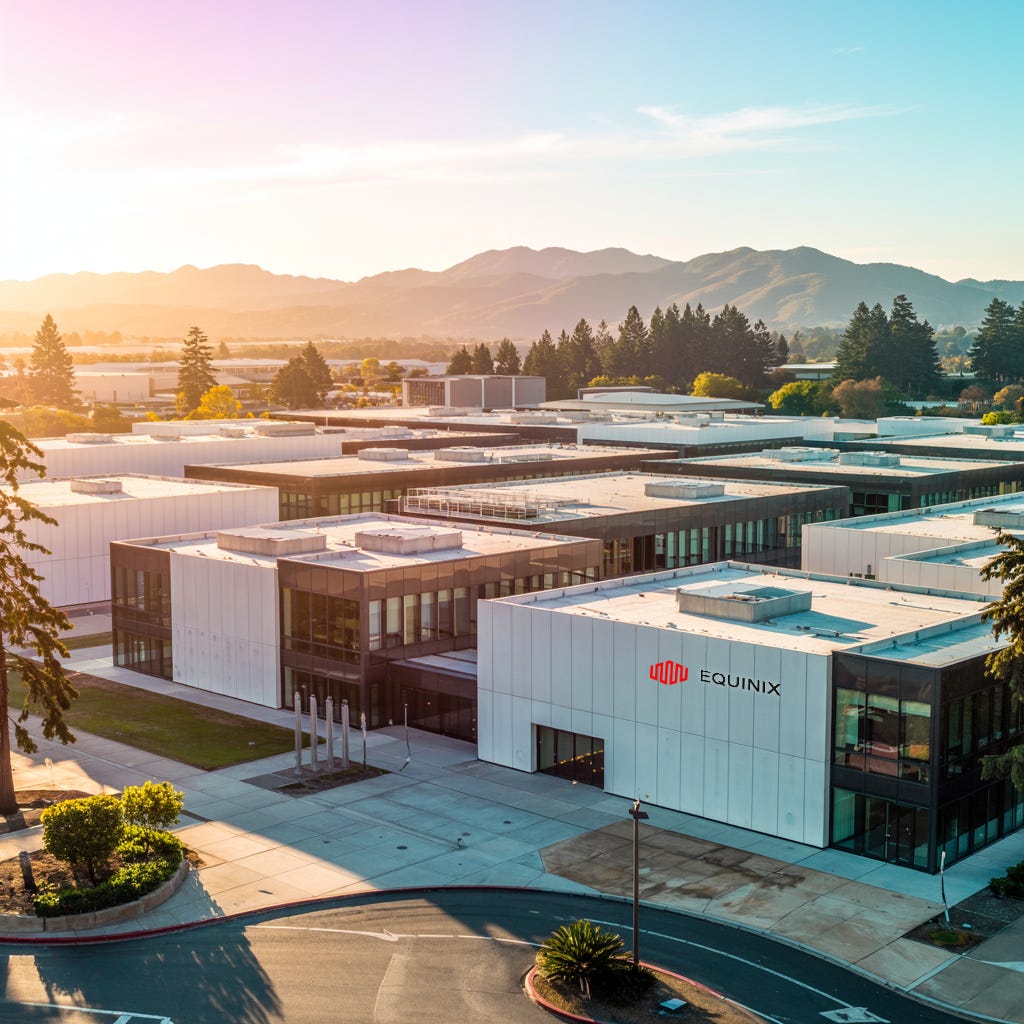Can Equinix’s $1.25B Nuclear Power Bet Give It the Edge in the $100B US AI Data Center Race?
The data center giant’s multi-technology nuclear and fuel cell strategy could redefine how AI infrastructure is powered in the United States.
Welcome to Global Data Center Hub. Join investors, operators, and innovators reading to stay ahead of the latest trends in the data center sector in developed and emerging markets globally.
AI isn’t just eating software. It’s devouring power grids.
Global data center electricity demand is projected to soar 165% by 2030, with AI workloads driving much of the surge.
For investors, operators, and policymakers, the debate is no longer about whether this growth is real.
It’s about how to deliver the massive, reliable power needed without hitting hard limits.
Equinix may have just demonstrated a new playbook, blending nuclear and fuel cell strategies to secure its long-term energy edge.
Such diversification aligns with insights from Can Equinix’s $1.25B Nuclear Power Bet Give It the Edge in the $100B US AI Data Center Race?.
A Capacity Hedge in an Era of Scarcity
In August 2025, Equinix made two major moves to secure reliable clean power:
Locked in 1.25+ gigawatts of nuclear capacity across four advanced providers.
Expanded its decade-long partnership with Bloom Energy to deploy 100+ megawatts of solid-oxide fuel cells.
This isn’t a “green PR” gesture. It’s a long-term capacity hedge.
Securing baseload power AI workloads demand, guarding against market volatility, and signaling sustainability leadership to customers and regulators.
The logic is simple.
Whoever controls the most reliable clean power wins the right to scale.
The Deals
Equinix’s approach is notable for its diversity.
Instead of betting on a single technology, it has spread across multiple nuclear designs and paired them with proven fuel cell deployments.
Oklo: 500 MW from small modular reactors fueled by nuclear waste, capable of running for a decade without refueling.
Radiant: Twenty portable microreactors producing 1.2 MW each, deployable in days.
ULC-Energy / Rolls-Royce: Up to 250 MWe for Dutch data centers.
Stellaria: 500 MWe from a molten salt reactor that breeds its own fuel and burns long-lived waste.
Bloom Energy’s fuel cells, already operating at scale, avoid 285,000 metric tons of CO₂ equivalent and save 382 billion gallons of embedded water use.
They serve as both a near-term bridge to nuclear and a hedge against grid dependency.
Why Nuclear?
AI training clusters don’t pause for cloud cover or fluctuating wind.
Nuclear offers a capacity factor above 92%, compared with ~35% for wind and ~25% for solar. That’s the difference between GPUs working at full tilt and sitting idle.
Fuel cells provide an immediate on-site generation option while nuclear projects move through the regulatory pipeline. They offer cleaner baseload power today and can integrate with hydrogen tomorrow.
Positioning in the Competitive Landscape
Major hyperscalers are also making bold moves in nuclear and next-generation power:
Amazon: committed $20B+ to nuclear projects at Three Mile Island.
Google: partnering with Kairos Power on a 500 MW SMR.
Microsoft: signed for 800 MW of nuclear and is piloting hydrogen fuel cells.
Equinix’s edge lies in diversification it isn’t reliant on one technology or geography. It’s building optionality into its future power supply, giving it room to adapt as timelines for SMRs, microreactors, and molten salt reactors evolve.
In an uncertain energy future, flexibility may prove as valuable as raw capacity.
Amazon’s long-term energy positioning is examined in Amazon’s $125B AI Infrastructure Surge: Balancing AWS Margin Pressure with Global Capacity Expansion.
The Investor Lens
Power is the new scarcity in AI infrastructure. Chips matter, but without clean, constant electricity, growth hits a ceiling.
Equinix’s strategy provides:
Reliability: 24/7 baseload for high-density workloads.
Flexibility: Multiple technologies to hedge deployment risk.
Influence: Early participation in nuclear projects that can shape permitting and policy.
The Takeaway
Equinix’s strategy goes beyond securing power it’s buying the right to grow when others may be forced to slow down:
For investors: a clear signal of long-term growth positioning.
In an industry where uptime is currency: the winners will be those who lock in clean, reliable baseload before the rest of the market realizes it’s already scarce.
In the race to scale AI infrastructure, this kind of foresight can mean the difference between leading the market and watching from the sidelines.

